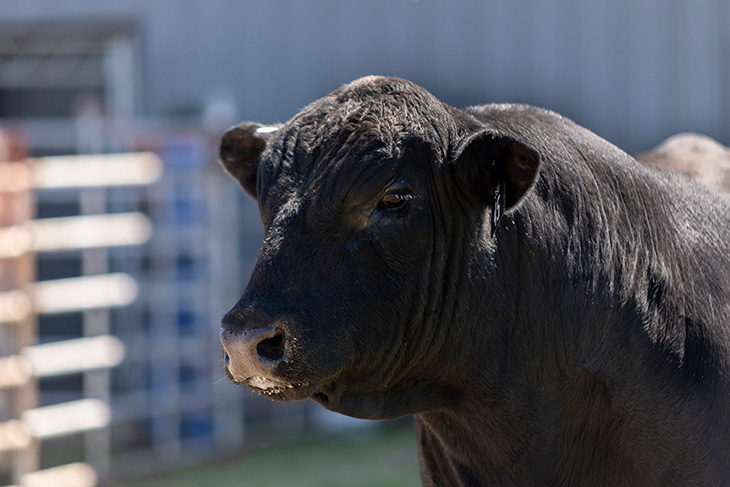
Bulls need to be ready for breeding season
Tuesday, March 10, 2020
Time is growing short for cow-calf producers who have not assessed the bulls they plan to use as herd sires for the upcoming spring breeding season.
“It is imperative producers contact their local veterinarian and make arrangements to have their bulls administered a breeding soundness exam,” said Glenn Selk, Oklahoma State University emeritus animal scientist and editor of the university’s popular Cow-Calf Corner newsletter. “Be sure to ask the veterinarian about the need for a trichomoniasis test.”
Bulls that do not pass a breeding soundness exam need to be replaced before the start of breeding. Selk recommended purchasing the replacement from a production sale or nearby seedstock producer as soon as possible.
Dana Zook, OSU Extension area livestock specialist, said it is good management to move the bull to its new environment several weeks before breeding.
“If the bull has been consuming a high-energy, grain-based diet, this will give the producer time to gradually reduce the grain and increase the forage intake,” she said.
The bull’s rumen will take some time to adjust to the forage-based diet it will consume during the breeding season. In addition, a sudden, steep decline in energy intake could cause a decrease in bull fertility.
“Bulls that will be placed together in multi-sire breeding pastures should be penned together for several weeks before the breeding season begins, as bulls naturally seek to establish a social order,” Zook said. “Avoid mixing younger bulls with more mature bulls in the same pasture.”
Young bulls typically do not win the hierarchy battle, which Selk said can cause them to become less aggressive breeders in future breeding seasons.
“Hierarchy needs to be settled before the start of the breeding season,” Selk said. “The first part of the breeding season should be for getting cows and replacement heifers bred rather than watching bulls fight each other trying to establish dominance.”
For more information about best cattle management practices, contact the local OSU Extension county office for assistance.
OSU Extension is one of two state agencies administered by the university’s Division of Agricultural Sciences and Natural Resources, and is a key part of OSU’s state and federally mandated teaching, research and Extension land-grant mission.
MEDIA CONTACT: Donald Stotts | Agricultural Communications Services | 405-744-4079 | donald.stotts@okstate.edu
